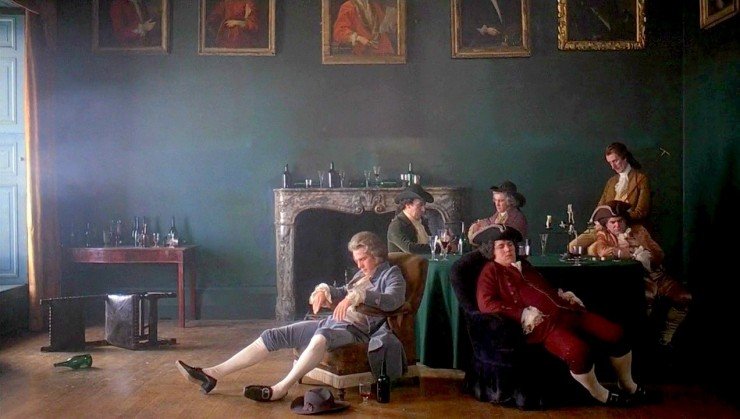How 1700’s Paintings And NASA Helped Create A Kubrick Masterpiece
As one of the most notable filmmakers of the 20th century, Stanley Kubrick pushed special effects technology and technique in many of his films, helping to develop many new ways of filmmaking in the process. These leaps forward in film technology are often associated with his more modern or futuristic films such as 2001: A Space Odyssey and Dr. Strangelove. Strangely enough though, one of the most important advances in film technology came not from a Sci-Fi epic, but from a 1700’s period piece, his 1975 film Barry Lyndon. The techniques and technology used to capture the feel of this period in the film was revolutionary, and its influence can still be seen today.
Set between the 1750’s to the 1780’s, Barry Lyndon captures a changing Europe; just at the cusp of the Industrial Revolution yet still very much indebted to the days of old. Gunpowder had thoroughly ingrained itself into warfare but basic commodities of today such as electricity were still over a century away. When watching other historical films taking place in this era, Kubrick and Director of Photography John Alcott noticed a few glaring inaccuracies and faults that detracted from their realism. The lighting was always much brighter than it actually would have been at that time, mostly due to the bright studio lights required to capture a clear image. The cinematography and set design also felt too modern; there was a dissonance between what was on screen and what they imagined the time actually looked like. For Barry Lyndon, their goal was to use as little unnatural light as possible, and to accurately portray the feel of the period.
Though the mid to late 1700’s was still pre-photography, Kubrick and Alcott were still able to find examples of the time in the world of art; in particular the paintings of William Hogarth. Hogarth’s interior paintings perfectly captured the feel of pre-electric Europe and provided the template for the film’s cinematography. The film even directly pays homage to these paintings by replicating them a few times throughout its running. The use of long takes also gives the film a “painterly” quality. As paintings are our only real images from the 1700’s, using them as a template makes the film feel more accurate to a modern viewer than crystal clear photography would.
Capturing the lighting in an accurate way would prove to be the most difficult part of the film’s production. Though the goal was to use as little unnatural light as possible, it was extremely difficult to capture even still photos on the camera’s of the 1970’s, let alone moving ones. After extensive research, Kubrick found a lens that may do the trick; the Zeiss Planar 50mm lens developed specifically for NASA to capture the dark side of the moon during the Apollo missions. With an aperture of only f/0.7, the film still holds the record for using the lowest f-stop in film history. Only 10 of these lenses were ever made; Kubrick purchased three, six were sold to NASA, and the last was kept by Zeiss. Because these lenses were intended for use in still photography, extensive modification was required for them to even work on a movie camera. By using these lenses, as well as push-developing the entire film to increase sensitivity, Kubrick and Alcott were able to capture images at extremely low light.
The prevalent lighting in the film is either natural light in the outdoor scenes or candlelight indoors. Alcott was able to use conventional lenses for most of the outdoor scenes, only needing the custom lenses indoors. Though they were able to rely mostly on candles or natural light through windows for the indoor scenes, studio lights were sometimes still required to capture clear enough images. When using studio lights, Alcott relied on a number of diffusion techniques, most notably placing the lights outside the windows and applying a gel to the window to give the light a natural appearance.
Upon its release, Barry Lyndon was a commercial flop and received a lukewarm critical response. Over time though its stature has grown, and it is now seen as one of Kubrick’s most underrated masterpieces. The use of low light in particular created high demand for cameras able to capture similar images at a much more available price. With the advent of digital, this technology is finally available to most directors and can be seen used in recent films such as Robert Eggers’ The Lighthouse. By pushing the world of film and camera technology beyond studio lighting, Barry Lyndon helped provide filmmakers from indie to mainstream with a brand new palette for storytelling. For that, its influence is massive.
